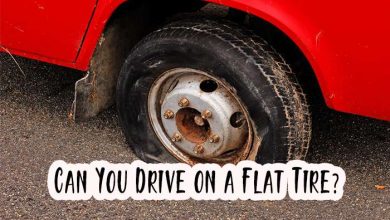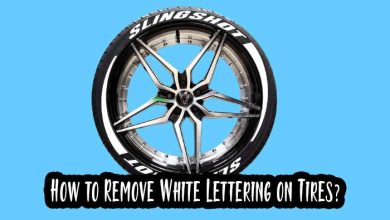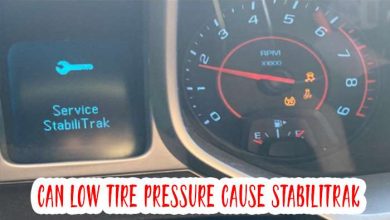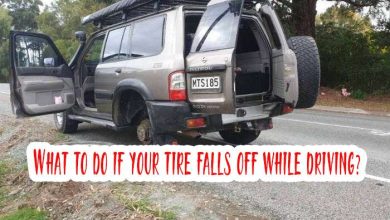Screw In Tire But No Leak | How Long Can I Drive?
Hey there, fellow motorists! It’s your friendly tire aficionado here, and today, we’re diving into a conundrum that leaves many scratching their heads: “Screw in a tire but no leak.”
How can a tiny intruder like a screw enter your tire without causing a pesky leak? Let’s roll up our sleeves and understand this bizarre phenomenon that defies common tire wisdom.
Read my recent post- What Could Cause Car Sounds Like It Has A Flat Tire But Doesn’t?
Screw In Tire But No Leak, Why Does It Happen?
You might think a screw piercing your tire should instantly spell disaster with hissing sounds and deflating rubber. However, sometimes, you can dodge a bullet. The rubber compound used in modern tires is robust and flexible, which means it can sometimes close around the screw, sealing it off like a superhero’s shield.
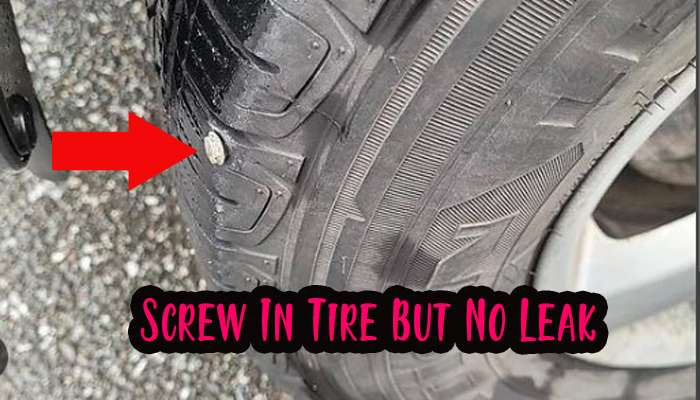
When a screw enters the tire’s tread, it often doesn’t penetrate deep enough to cause an immediate leak. It can sit snugly within the tread pattern, avoiding any contact with the critical inner layers of your tire.
However, this doesn’t mean you’re out of the woods. The screw can damage your tire’s integrity over time, leading to a slow leak or blowout. So, while there might be no immediate hissing sound, addressing the issue promptly is essential.
Assessing the Tire Damage
Now that you know why a screw in your tire might not leak, let’s discuss how to assess the situation like a pro.
- Visual Inspection: The first step is to inspect the tire. Look for the screw and check if it’s embedded in the tread. If it’s just stuck in the rubber without causing a visible puncture, you’re in luck for now.
- Air Pressure: Regularly check your tire’s air pressure. If it’s dropping consistently, it might be due to the screw’s slow puncture effect.
- Visual Changes: Look for bulges or deformities in the tire’s sidewall. These could be signs of internal damage from the screw.
- Tread Depth: Measure the tread depth around the screw. If it’s significantly shallower near the screw, it’s a sign that the tire’s integrity is compromised.
- Professionals Know Best: If you’re unsure, taking your car to a professional tire expert is always a good idea. They can assess the damage and provide guidance.
Screw in Tire but No Leak: What to Do Immediately?
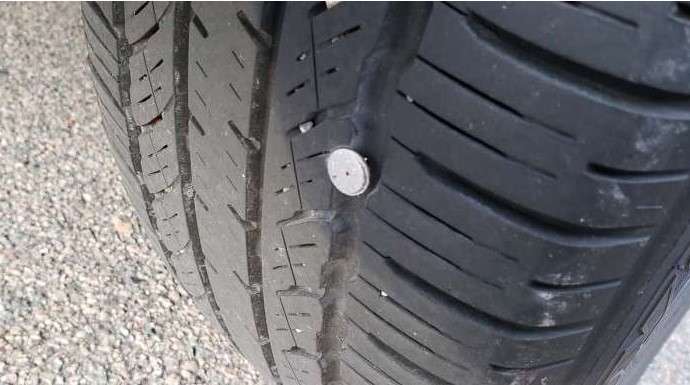
So, you’ve discovered a screw in your tire but no leak – what should you do? Here’s a quick-action guide:
- Leave It Alone (For Now): If the screw isn’t causing a leak and you’re not far from a tire shop or a professional, it might be best to let the experts handle it.
- Tire Repair Kit: If you’re in a bind and need a temporary fix, consider using a tire repair kit. This kit typically includes a plug and a patch that can seal the puncture temporarily. Follow the instructions carefully.
- Spare Tire: This might be the safest route if you have a spare tire and know how to change it. It’s not a long-term solution; it gets you home or to a repair shop.
- Tire Sealant: Tire sealant can be a lifesaver. Some sealants can temporarily plug the hole and re-inflate the tire. Be cautious; it’s not a permanent fix.
- Professional Inspection: The best advice is to head to a tire professional. They can assess the tire’s overall condition and decide if it’s repairable or needs replacement.
- Don’t Procrastinate: Whatever you choose to do, don’t procrastinate. Address the issue promptly to avoid worsening damage.
Read More:
Can You Put Big Tires on Small Rims?
Tips to Avoid Future Incidents
Prevention is always better than cure, especially when it comes to tires. Here are some tips to avoid future screw-related tire mishaps:
- Regular Inspections: Make it a habit to inspect your tires for foreign objects, like screws or nails, stuck in the tread. The sooner you catch them, the better.
- Drive Carefully: Be mindful of where you drive. Avoid construction sites or roads with debris if possible.
- Maintain Proper Tire Pressure: Keep your tires properly inflated. Underinflated tires are more susceptible to punctures.
- Invest in Quality Tires: Quality tires often have better tread compounds that can resist punctures and abrasions more effectively.
- Tire Rotation: Regular tire rotation helps ensure even wear, reducing the chances of punctures.
- Consider Tire Sealant: Some drivers proactively use tire sealant, which can help prevent leaks or slow down the loss of air pressure in case of a minor puncture.
Frequently Asked Questions
Can I drive with a screw in my tire?
You can, but it’s not recommended. It’s safer to get it checked by a professional as soon as possible. While it might not be leaking immediately, the screw can compromise your tire’s integrity over time.
Is it safe to use a tire sealant?
Tire sealants can be a temporary solution but aren’t a permanent fix. They can help in a pinch, but a professional inspection is crucial.
How long can a screw stay in a tire?
A screw can stay in a tire without causing an immediate leak. However, addressing it as soon as possible is essential to avoid long-term damage to your tire.
How do you fix a tire with a screw in it?
You can use a tire repair kit, a spare tire, or a professional tire repair service. The method depends on your expertise and the severity of the damage.
Will fix a flat work if you have a screw in your tire?
Fix-a-Flat can temporarily seal the puncture and re-inflate the tire. It’s a handy solution for emergencies, but it’s not a long-term fix. Get your tire inspected by a professional.
Conclusion
So there you have it, the mystery of a “screw in tire but no leak” unraveled. While it may seem paradoxical, your tire’s robust construction can sometimes keep a sneaky screw at bay.
However, don’t let your guard down. Timely inspection and professional guidance are your best allies in keeping your ride safe and sound.
Reference Link
The Complete Guide to Tire Maintenance
Glossary
- Tire Tread: The rubber part of the tire that makes contact with the road.
- Tire Puncture: An object, like a screw or nail, that penetrates the tire, causing potential air leakage.
- Tire Sealant: A liquid or gel temporarily seals small punctures in a tire.
